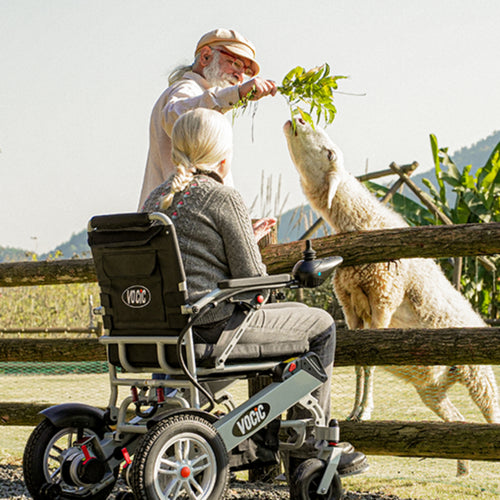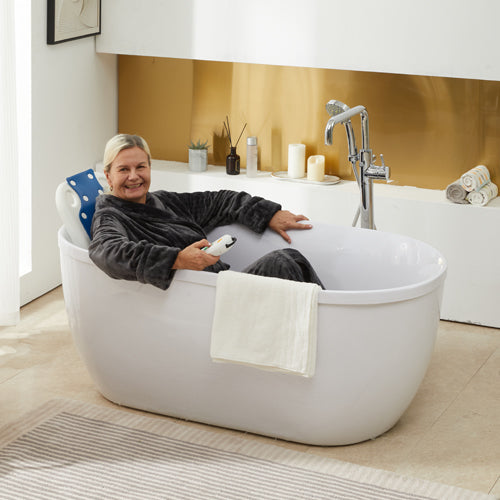Lifting a patient off the floor using a Hoyer lift is an essential nursing skill that ensures patient and caregiver safety. The Hoyer lift provides a safe, comfortable way to lift and transfer patients who have limited mobility or injuries that prevent them from getting up on their own.
This guide will walk you through the steps to properly use a Hoyer lift, from preparing the equipment to safely lifting and transferring a patient to a chair or bed.
What Is a Hoyer Lift?
A Hoyer lift is a type of mechanical device used to assist in transferring patients or individuals with limited mobility. It typically consists of a patient lift sling that supports the person’s body, and a hydraulic or electric lift system to raise and move them from one position to another, such as from a bed to a wheelchair.
This lift is particularly helpful in medical and caregiving settings, as it reduces the risk of injury to both the patient and the caregiver by providing safe, controlled movement.
Who Can Use a Hoyer Lift?
A Hoyer lift is an essential tool designed for individuals who have significant mobility challenges, helping both caregivers and patients with safe transfers. Common users include:
-
Elderly Individuals: People with age-related mobility issues like muscle weakness or joint problems.
-
Disabled Individuals: Those with physical disabilities such as spinal cord injuries, muscular dystrophy, or cerebral palsy.
-
Post-Surgery Patients: Individuals recovering from surgery, especially orthopedic or spinal procedures.
-
Chronically Ill or Injured Individuals: Those suffering from conditions like strokes or Parkinson's disease.
What Lifting Equipment Can Help Lift a Person off the Ground?
Various types of lifting equipment can help to safely lift a person off the ground, each designed for a specific need.
1. Hoyer Lift (Patient Lift)
Hoyer lifts, commonly called patient lifts, are mechanical devices used to transfer patients from the ground to beds, chairs, wheelchairs, or other surfaces. They use a sling to support the patient, evenly distributing their weight and reducing stress on both the patient and caregiver.
2. Standing Assist Lifts
Standing Assist Lifts are ideal for those who still have some weight-bearing capacity but need help standing up from a sitting or lying position. The patient can hold onto the handles and the lift gently supports them as they stand up. Additionally, it improves the patient's mobility while reducing the risk of injury during transfers.
3. Ceiling Lifts
Ceiling lifts are mounted on tracks in the ceiling and allow caregivers to safely move patients from one area to another, such as from a bed to a wheelchair or even between rooms. This type of lift is often found in hospitals and long-term care facilities, but can also be installed in the home.
4. Portable Lifts
Portable lifts are lightweight and can be easily moved between different rooms or locations. Portable lifts are particularly useful for home caregivers because they are versatile and are generally foldable, making them ideal for people who need assistance occasionally, such as when traveling or in a small space.

How to Use a Hoyer Lift Step-by-Step?
A Hoyer lift is an essential tool for safely transferring someone who has fallen and cannot get up on their own. Whether at home or in a care facility, using a Hoyer lift properly can prevent injuries for both the caregiver and the patient. Follow these steps to ensure a safe and comfortable lift.
Step 1: Prepare the Equipment
Before starting, check that the Hoyer lift is in proper working condition, ensuring the wheels are locked and the lift arms and sling are undamaged. If it’s an electric model, confirm it is charged. Select the appropriate sling based on the patient’s size and needs to ensure proper support.
Step 2: Position the Sling
Carefully roll the person onto their side and slide the sling under their back and thighs. Make sure the sling is centered to ensure stability during the lift. Roll them back gently, ensuring the sling is smooth and flat to prevent discomfort during the transfer.
Step 3: Attach the Sling to the Lift
Move the lift close to the patient and open the base for added stability. Attach the straps of the sling securely to the hooks on the lift. Check that all connections are even and secure, ensuring the patient is comfortable before starting the lift process.
Step 4: Lift the Patient
Using the lift controls, begin to slowly raise the patient off the floor. Lift gradually to maintain balance and avoid sudden movements. Midway through the lift, ensure the patient feels stable and properly positioned, adjusting straps if necessary to maintain comfort and safety.
Step 5: Lower and Transfer the Patient
Move the patient to the desired surface, ensuring their body is aligned correctly. Lower them slowly, making sure they are comfortable throughout the process. Once the patient is securely positioned, carefully remove the sling, ensuring their comfort and proper placement in the chair or bed.

Tips for Preventing Falls at Home
Here are some tips for preventing falls at home:
-
Eliminate Trip Hazards: In high-traffic areas, keep floors clear of clutter, loose rugs, and electrical cords. Use non-skid mats to secure rugs or remove them entirely. And make sure furniture is neatly arranged to provide wide, barrier-free pathways.
-
Improve Lighting: Install bright lights in dark areas, especially near stairways and hallways. Also, use nightlights in bedrooms and bathrooms to ensure safe passage at night. Consider using motion sensor lighting for added convenience and safety.
-
Install Handrails and Grab Bars: Handrails on both sides of stairs provide stability. In the bathroom, install handrails near the toilet, shower, and tub to help prevent slips on wet floors.
-
Keep Essentials Within Easy Reach: Keep frequently used items, such as kitchen utensils or toiletries, at waist or shoulder height so that you don't have to reach or climb. If you need a taller shelf, use a sturdy step stool with armrests.
-
Consider an Indoor Aid: For the elderly with muscle weakness or limb disabilities, you may consider preparing a rolled walker or a lift chair for elderly for them to facilitate their movement and bathing at home.
FAQs
1. Can a Hoyer Lift Be Used on Carpet?
Yes, Hoyer lifts can be used on carpet, but they may require extra effort due to the friction between the lift's wheels and the carpet surface. It is important to make sure the wheels are smooth and the base is wide enough to remain stable. In some cases, using a Hoyer lift on thick or plush carpet may be more difficult, resulting in a less smooth transfer. For better performance, you may want to consider using the Hoyer lift on a harder surface or opting for a lift with larger, sturdier wheels.
2. Can One Person Use a Hoyer Lift?
Yes, one person can operate a Hoyer lift, but it requires proper training and caution. If you are a caregiver, you must be familiar with how to safely position the patient, attach the sling, and operate the controls of the lift. While one person can also use the lift, it can be more difficult and dangerous, especially for someone who is heavier or has limited mobility. In many cases, it is recommended that two people be present to assist with the transfer to ensure the patient's stability and prevent accidents. Lift chairs for seniors can also be a helpful alternative when transferring someone from a seated to standing position, providing extra support and comfort in situations where a Hoyer lift may not be necessary. Lift chairs for seniors, including Hoyer lifts, are specifically designed to help individuals with limited mobility safely transition from sitting to standing. These lifts provide essential support and reduce the risk of injury for both the user and the caregiver.
3. How to Use a Hoyer Lift from Bed to Chair?
To move a patient from a bed to a chair using a Hoyer lift, first place the sling under the patient while they are lying down. Securely fasten the sling to the lift and make sure all straps are properly fastened. Slowly lift the patient off the bed, keeping them balanced and comfortable. Once fully lifted, carefully move the lift toward the chair. Slowly lower the patient into the chair, making sure they are properly aligned. Finally, remove the sling, making sure the patient is comfortable and secure in the chair.
4. Does Medicare pay for Hoyer lifts?
Yes, Medicare covers the cost of a manual Hoyer lift as durable medical equipment (DME) under Part B. A doctor's prescription is required to prove medical necessity. Coverage may differ depending on whether the beneficiary is enrolled in Original Medicare or a Medicare Advantage plan. The lift must be purchased from a Medicare-approved supplier who accepts Medicare's rates.
Out-of-pocket costs may include the Part B deductible ($257) and coinsurance (20% of the Medicare-approved amount). If the lift is rented for 13 months, ownership transfers to the beneficiary.
5. What is the difference between a Hoyer lift and a patient lift?
A Hoyer lift is a mobile, floor-based lifting system with wheels, designed to safely lift, suspend, and transfer patients. It uses a patient lift sling that can slide under the patient’s body to provide full-body support and is commonly used in homes, hospitals, and nursing facilities.
On the other hand, a patient lift is a broader category of equipment. It includes Hoyer lifts, as well as ceiling-mounted lifts, standing lifts, and other specialized devices designed for various mobility needs. Though all Hoyer lifts are considered patient lifts, patient lifts are not exclusively Hoyer lifts.







